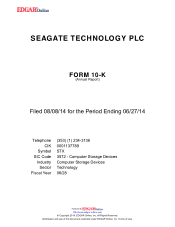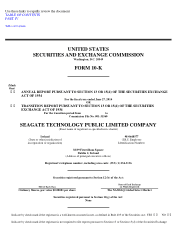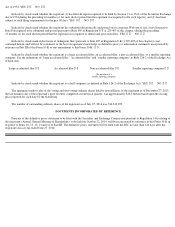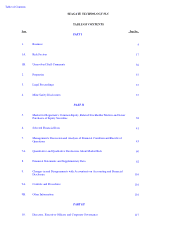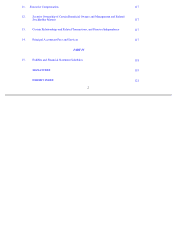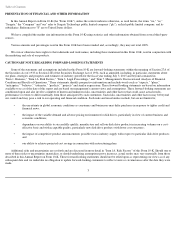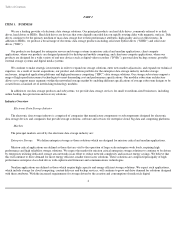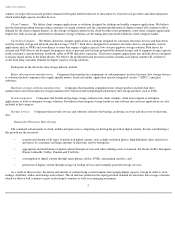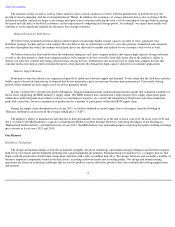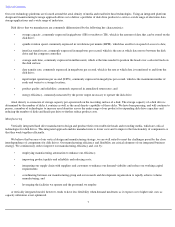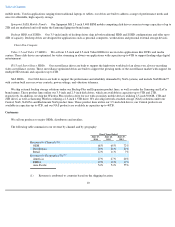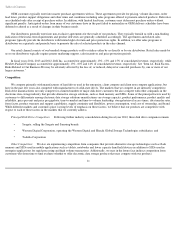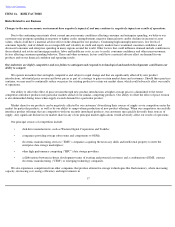Seagate 2013 Annual Report Download - page 10
Download and view the complete annual report
Please find page 10 of the 2013 Seagate annual report below. You can navigate through the pages in the report by either clicking on the pages listed below, or by using the keyword search tool below to find specific information within the annual report.
Table of Contents
Our core technology platforms are focused around the areal density of media and read/write head technologies. Using an integrated platform
design and manufacturing leverage approach allows us to deliver a portfolio of disk drive products to service a wide range of electronic data
storage applications and a wide range of industries.
Disk drives that we manufacture are commonly differentiated by the following key characteristics:
• storage capacity, commonly expressed in gigabytes (GB) or terabytes (TB), which is the amount of data that can be stored on the
disk drive;
• spindle rotation speed, commonly expressed in revolutions per minute (RPM), which has an effect on speed of access to data;
• interface transfer rate, commonly expressed in megabytes per second, which is the rate at which data moves between the disk
drive and the computer controller;
• average seek time, commonly expressed in milliseconds, which is the time needed to position the heads over a selected track on
the disk surface;
• data transfer rate, commonly expressed in megabytes per second, which is the rate at which data is transferred to and from the
disk drive;
• input/output operations per second (IOPS), commonly expressed in megabytes per second, which is the maximum number of
reads and writes to a storage location;
• product quality and reliability, commonly expressed in annualized return rates; and
• energy efficiency, commonly measured by the power output necessary to operate the disk drive.
Areal density is a measure of storage capacity per square inch on the recording surface of a disk. The storage capacity of a disk drive is
determined by the number of disks it contains as well as the areal density capability of these disks. We have been pursuing, and will continue to
pursue, a number of technologies to increase areal densities across the entire range of our products for expanding disk drive capacities and
reducing the number of disks and heads per drive to further reduce product costs.
Manufacturing
Vertically integrated hard drive manufacturers design and produce their own read/write heads and recording media, which are critical
technologies for disk drives. This integrated approach enables manufacturers to lower costs and to improve the functionality of components so
that they work together efficiently.
We believe that because of our vertical design and manufacturing strategy, we are well suited to meet the challenges posed by the close
interdependence of components for disk drives. Our manufacturing efficiency and flexibility are critical elements of our integrated business
strategy. We continuously seek to improve our manufacturing efficiency and cost by:
• employing manufacturing automation to enhance our efficiency;
• improving product quality and reliability and reducing costs;
• integrating our supply chain with suppliers and customers to enhance our demand visibility and reduce our working capital
requirements;
• coordinating between our manufacturing group and our research and development organization to rapidly achieve volume
manufacturing; and
• leveraging the facilities we operate and the personnel we employ.
A vertically integrated model, however, tends to have less flexibility when demand moderates as it exposes us to higher unit costs as
capacity utilization is not optimized.
7

